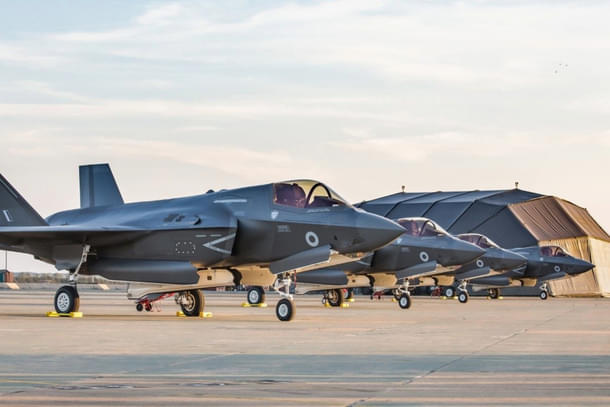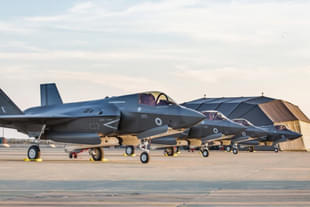Defence
Why India Must Politely Decline Trump's F-35 Stealth Fighter Offer
R Jagannathan
Feb 24, 2025, 12:33 PM | Updated Feb 25, 2025, 11:51 AM IST
Save & read from anywhere!
Bookmark stories for easy access on any device or the Swarajya app.


Henry Kissinger’s famous quote — that it may be dangerous to be America’s enemy, but to be a friend is fatal — is what India should take note of as it seeks to stay on the right side of Donald Trump.
But can anyone ever know which is Trump’s right side? While it is always useful to have a good equation with any United States (US) President, we can end up making costly mistakes without a clear understanding of what to protect in this relationship.
During his one-on-one meeting with Trump earlier this month, Prime Minister Narendra Modi was offered the F-35 stealth fighter, an offer made to no country outside NATO or core allies like Japan and South Korea.
In terms of technology, it is the most advanced in the world, but the jury is out on whether this is what India needs. Not least because the Russians have offered the Su-57 stealth fighter, with the possibility of licensed production in India.
Given India’s history with the Sukhoi fighter — of which 260 are operated by the Indian Air Force and another twelve are to be produced under licence by Hindustan Aeronautics Ltd in India by 2027 — it is this ecosystem that needs to grow apart from developing our own engines and aircraft for the future. Depending on a wayward USA to fill temporary gaps in air defences would be folly.
India should, thus, politely decline Trump’s F-35 offer, and instead offer to buy some other — more useful — military hardware from the US.
Military experts would be the best persons to decide on the F-35 offer after weighing all the pros and cons, but the cons are so obvious that we should be wary from the word go.
Here are five reasons why we should say no to Trump:
One, Lockheed, the manufacturer of the F-35, is very secretive and holds tight rein on both technology and spares. This means any maintenance in India will require many US personnel to be placed here to guard the crown jewels, and make India that much vulnerable to US spying and interference in Indian defence procurement.
Two, the F-35s may not be available for action in full force during any war. According to Stephen Bryen, who runs a military strategy column titled Weapons and Strategy, “The challenge for India is the cost of the F-35 compared to the Su-57, the very high demand for effective maintenance and training, and various problems the F-35 encounters operationally, especially aircraft availability.”
Bryen estimates that even for the US, availability is just about 51 per cent, and in India, it would be lower. Put simply, the F-35 could prove to be a white elephant in peacetime and remain partly unavailable when needed in war. (Read Stephen Bryen’s full article on the F-35 Vs Su-57 comparison here)
Three, as the only non-ally to be offered the F-35, any sale to India will have a tough passage through the US Congress, and we may possibly need regular clearance from US legislatures to keep getting spares and upgrades from Lockheed.
Given the inability of Lockheed to supply even the basic lower-tech engines for our Tejas programme in time, it would be foolhardy to expect a smooth relationship with the US on the F-35s. And, once Trump is out of the picture or becomes a lame duck in the second half of his four-year tenure, we cannot predict what a vengeful Democratic Congress may do to the F-35 programme.
Fourth, unlike the Russians, Lockheed is not offering any co-production or licensed production in India. We can live with some squadrons being made completely in America for deliveries to India, but a large country like India cannot ultimately depend on the US to meet a significant part of our defence needs without conditions. That is not acceptable.
Fifth, decisions to buy military hardware cannot be taken without evaluating the alternatives. Bryen makes the point that the Su-57 would suit India’s needs better, and wonders “whether India is willing to invest billions of rupees in the F-35 knowing it could do better buying the Russian jet.”
A deal that is subject to the vagaries of American political winds cannot do India-US relations any good, Trump or no Trump.
The most important part of the India-US relationship is the trade in goods and services, where India has a massive surplus, and it is this surplus that enables us to run trade deficits with nine of our top 10 trade partners. It is this part of the India-US relationship, especially in services, that India must protect at any cost.
Jagannathan is former Editorial Director, Swarajya. He tweets at @TheJaggi.





